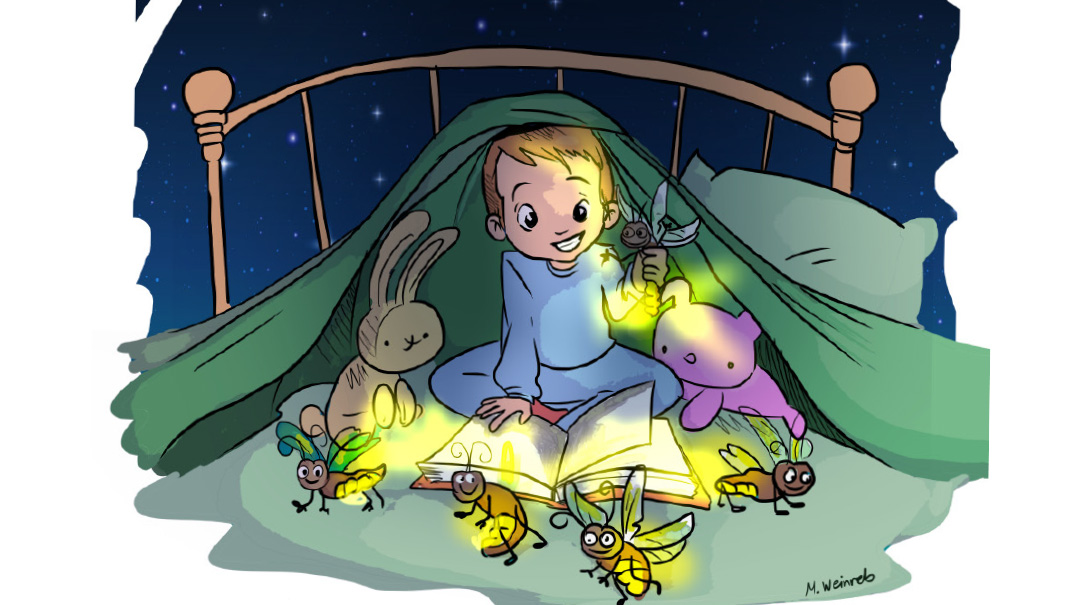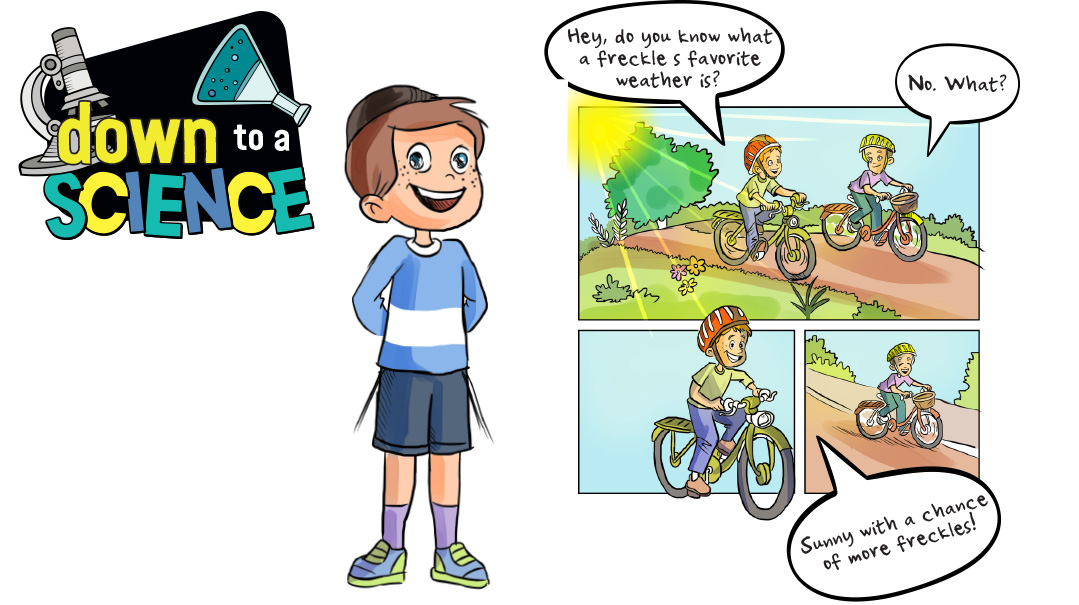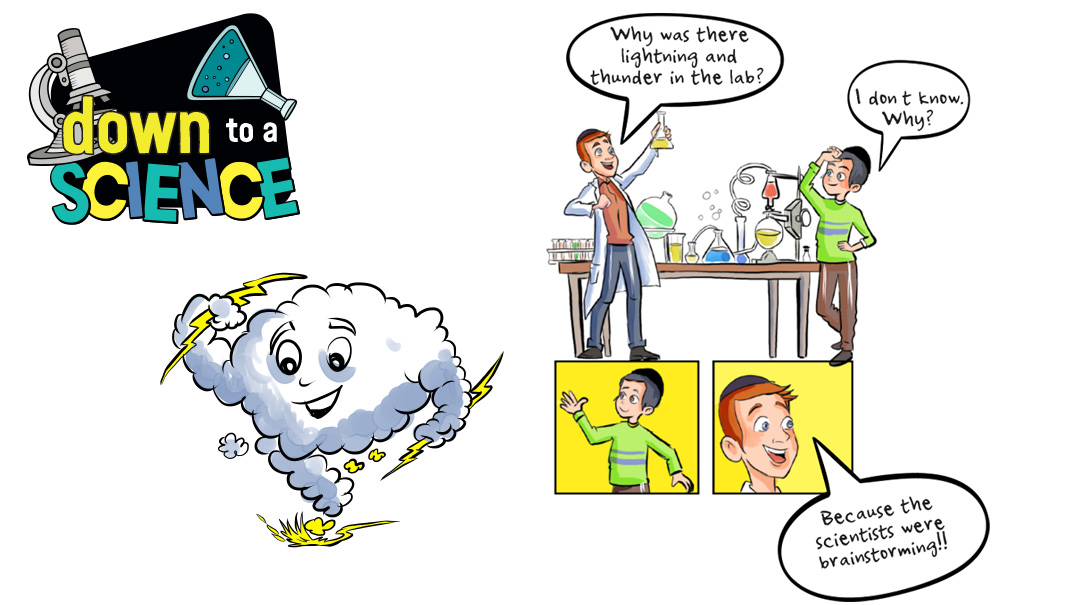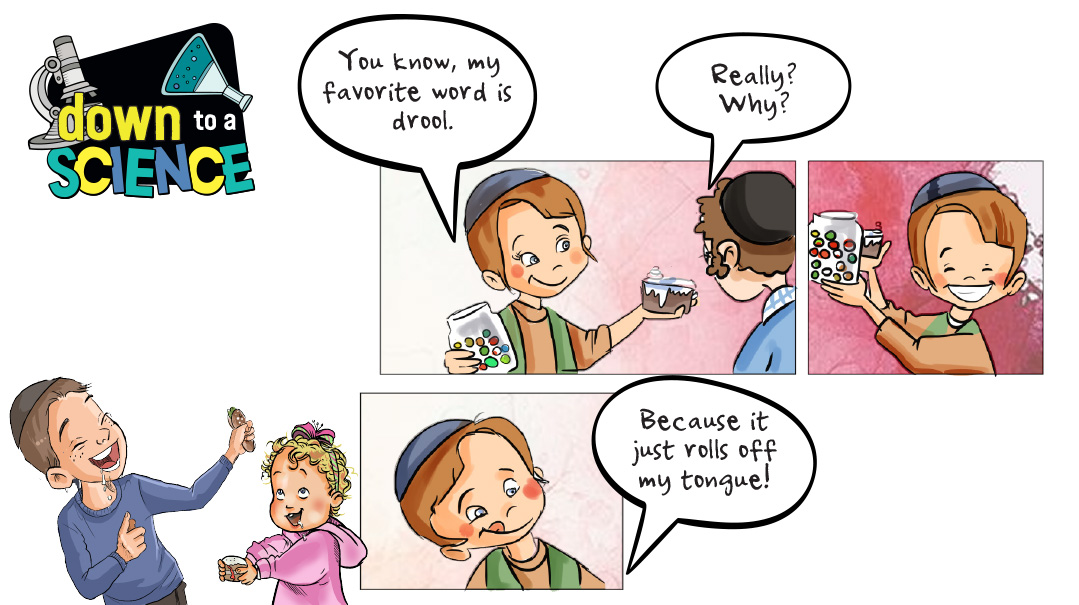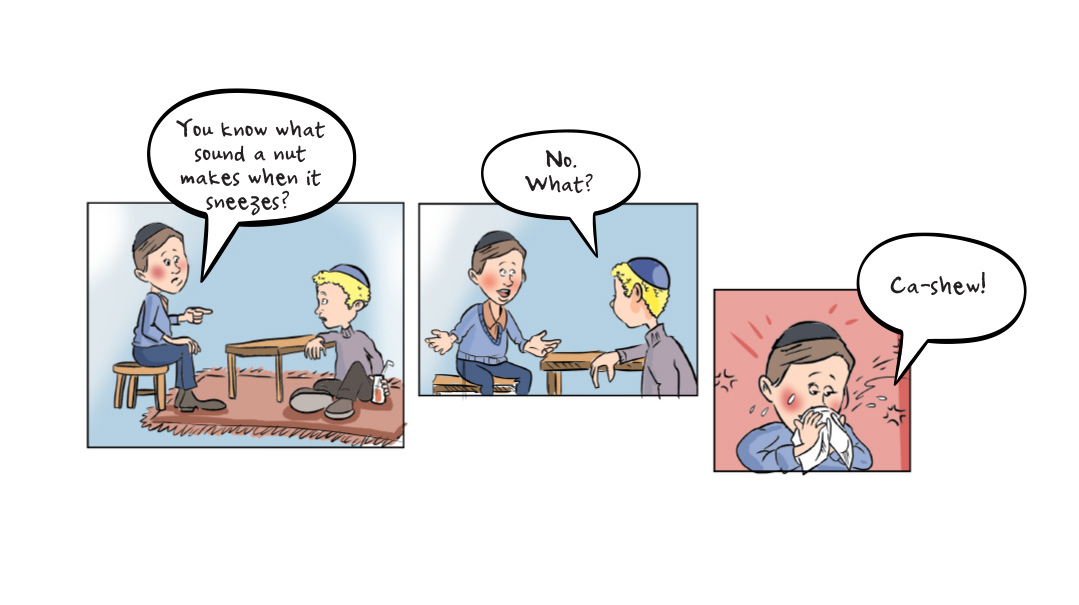A Chopped Competition

What makes some foods taste delicious and others horrendous?
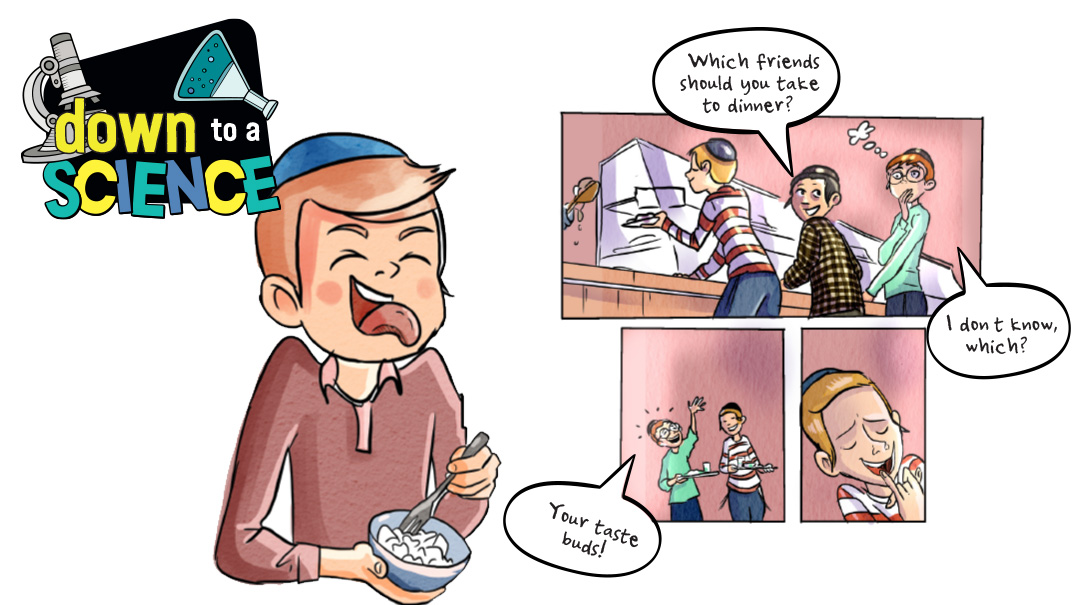
Hello kiddos,
This is Professor Mordy Maven, Thinker, Wonderer, and Figure-Outer of all things Science-ish. Which basically means that I try really hard to figure stuff out. I do the hard work so you don’t have to!
On Sunday, my sister decided to organize a Chopped competition. I was really excited because I love chopping things! Then she explained that it was actually a cooking competition to see who could make the best-tasting meal. Sigh.
I’m a natural competitor, though, so I started grabbing ingredients and got to work. For my meal, I chose a square white plate. I smeared chopped garlic over two caramel wafers and made a sandwich with dill pickle dip. I garnished it with salami.
My mother, who was the judge, took one look at my concoction and turned a very interesting shade of green.
“Um, Mordy,” she said, “that is quite a unique combination.”
“Thank you,” I said proudly. “I thought of all the foods I like and put them together.”
“Well,” she said. “It certainly looks… interesting.”
“No, it doesn’t,” my brother said. “It looks disgusting.”
I knew I had to prove him wrong and defend my creation. So, I took a huge forkful of my beautiful caramel-dill-garlic appetizer and shoved it in my mouth. There was a momentary terrifying explosion of tastes in my mouth. I held it in as long as I could, I really did! But after a few seconds, I just couldn’t anymore. I spit it all out onto the floor.
Later, when I was cleaning up the mess, I got to thinking. What makes some foods taste delicious and others horrendous? Here’s what I discovered.
First off, whether or not you mix garlic and caramel in your mouth, it’s gross. Just hear me out why it is so.
I think we can all agree that getting hair in your mouth is disgusting, right? Well, if that’s true, then guess what? We’re all disgusting. All the time! Because I’ve got hair in my mouth right now. And I hate to tell you, but you do, too.
Now, before you start gagging and trying to cough up your hair ball, let me explain. Meet… your tongue. This is an organ that is good for many things — catching raindrops, blowing bubbles of gum, and licking envelopes shut, to name just a few. It should come as no surprise that this extraordinary organ is also used for tasting.
Stick out your tongue in the mirror for a minute. Don’t worry, nobody’s looking. (And if they are, so what? You’ve got nothing to be ashamed of!) What did you see? I bet you noticed a bunch of little bumps all over the surface of your tongue. Now don’t go scraping those off with sandpaper. You need them. Those bumps are called papillae, and inside them are your taste buds.
Taste buds are the sensory organs that allow you to taste the foods you eat. Okay, ready for the gross part? Inside the papillae are microvilli which are tiny, sensitive, microscopic hairs. So, basically… you’ve got a hairy tongue. Gross? Maybe. But also necessary.
When you chew something, the flavor molecules in the food reach the microvilli in your taste buds, which send messages to the brain to let it know what it is tasting.
At the very same time, the food releases chemicals, which travel up your nose triggering “olfactory receptors,” which send the smell of the food to your brain. Now your brain is getting taste messages from your tongue and smell messages from your nose. The combination of these two messages result in that special something we call, “flavor.” This information helps your brain say, “yum, bubblegum!” or “yuck, caramel and garlic!”
There’s also a combination of specialized senses that can be triggered in the mouth, throat, nose, and eyes. These affect the experience of the things we taste, like the burning feeling of chili pepper or the cold sensation of mint. Cool, right? (Or hot, if it’s jalapeño.) And recently, scientists have discovered that there are also taste receptors inside the small intestines!
Based on research, our like or dislike of a food also depends on what we’re used to tasting, even from before we were born. Studies have proven that when kids try an unfamiliar food more than nine times, they tend to start liking it. And their enjoyment increases if their parents like the food, too.
Based on that, I should have won that competition! Every single thing I put on that plate was delicious, and the rule was that we need to make food that tastes good. No one said it had to be food that tastes good together! And besides, by the time it gets to the taste buds in my small intestine, it’s all mushed up together anyway!
Here are some fascinating facts about taste buds you might like to know:
Inside the papillae are 50 to 100 taste cells folded together like the petals of a flower. That’s why they’re called taste “buds.”
The average person’s tongue has between 200 to 10,000 taste buds. Children have more taste buds than adults.
Your tongue print is as unique as your fingerprint! Researchers are working on ways to use the tongue as a biometrics (the measurement of a person’s unique characteristics) tool for identifying people.
Aside from sweet, salty, sour, and bitter, there’s also a special taste called umami, which is Japanese for savory or delicious. It’s kind of like a mix of all the other flavors put together.
(Originally featured in Mishpacha Jr., Issue 960)
Oops! We could not locate your form.

